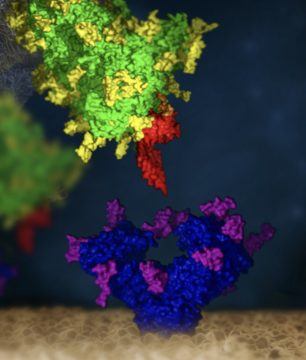From Phys.org:
 The road from SARS-CoV-2’s “immunity shield” or “sheep’s clothing” to its Achilles’ heel involved several state-of-the-art research techniques. In collaboration with Peter Hinterdorfer of the Institute of Biophysics at the University of Linz, Austria, the team used high-tech biophysical methods to analyze how the lectin binding takes place in detail. For example, the researchers measured which binding forces and how many bonds occur between the lectins and the Spike protein. This also made it clear to which sugar structures Clec4g and CD209c attach.
The road from SARS-CoV-2’s “immunity shield” or “sheep’s clothing” to its Achilles’ heel involved several state-of-the-art research techniques. In collaboration with Peter Hinterdorfer of the Institute of Biophysics at the University of Linz, Austria, the team used high-tech biophysical methods to analyze how the lectin binding takes place in detail. For example, the researchers measured which binding forces and how many bonds occur between the lectins and the Spike protein. This also made it clear to which sugar structures Clec4g and CD209c attach.
More good news: The team found that the two lectins bind to the N-glycan site N343 of the Spike protein. This specific site is so crucial to the Spike that it can never be lost in any infectious variant. In fact, a deletion of this glycosylation site renders the Spike protein unstable. In addition, other groups have also shown that viruses with mutated N343 were non-infectious. “This means that our lectins bind to a glycan site that is essential for Spike function—it is therefore very unlikely that a mutant could ever arise that lacks this glycan,” explains Mereiter.
